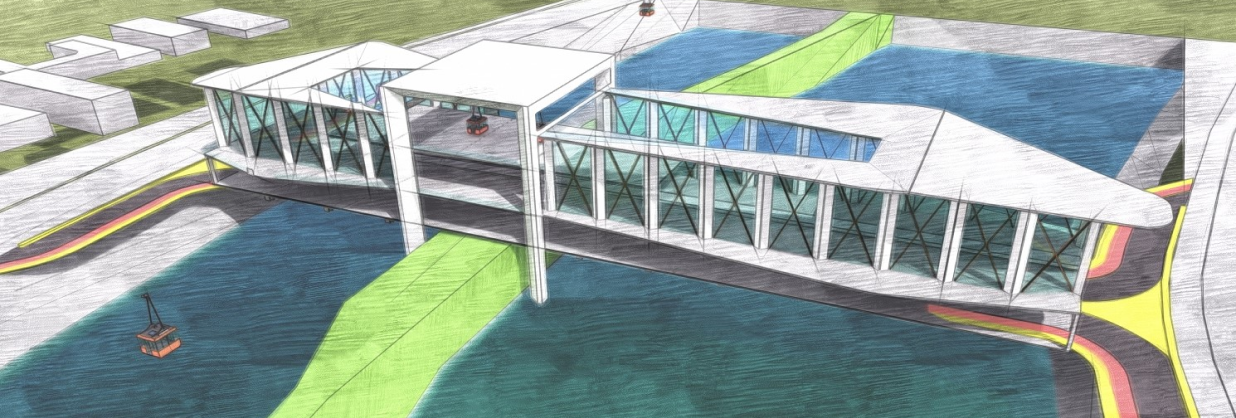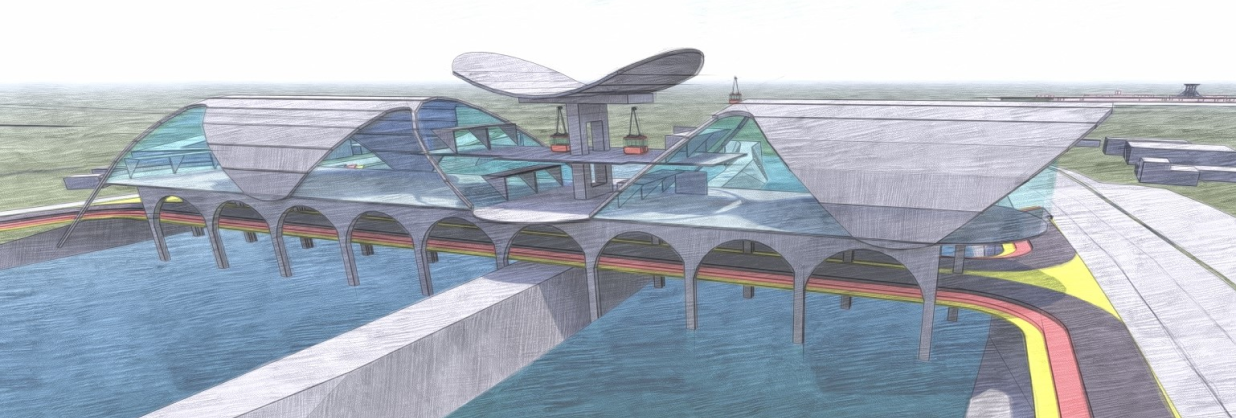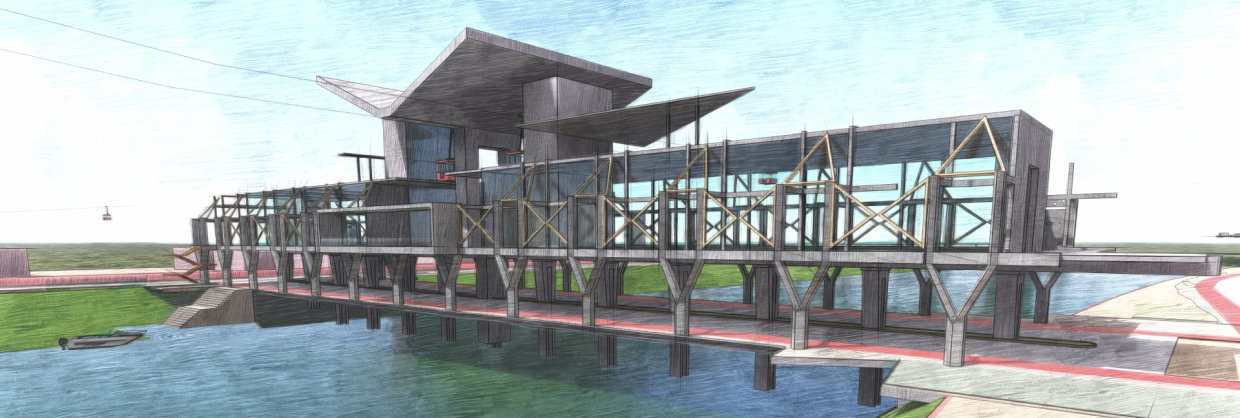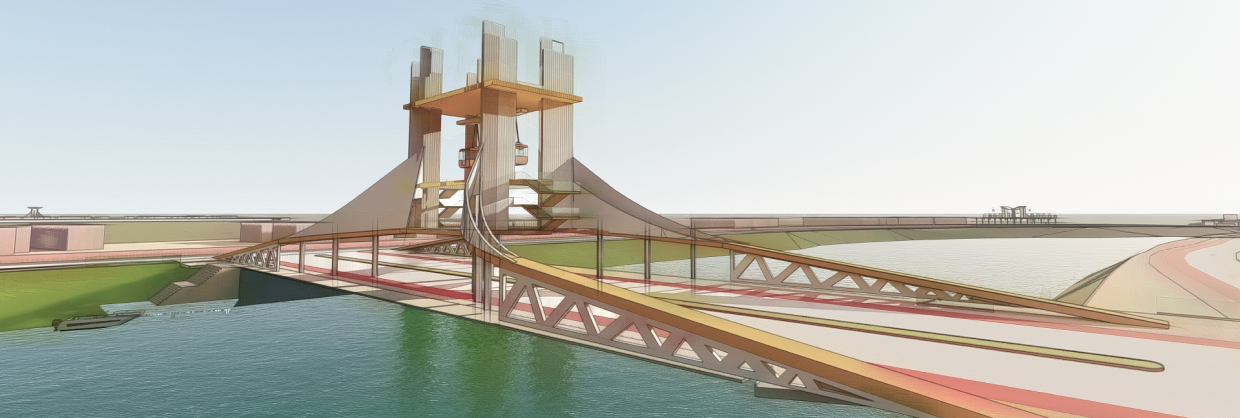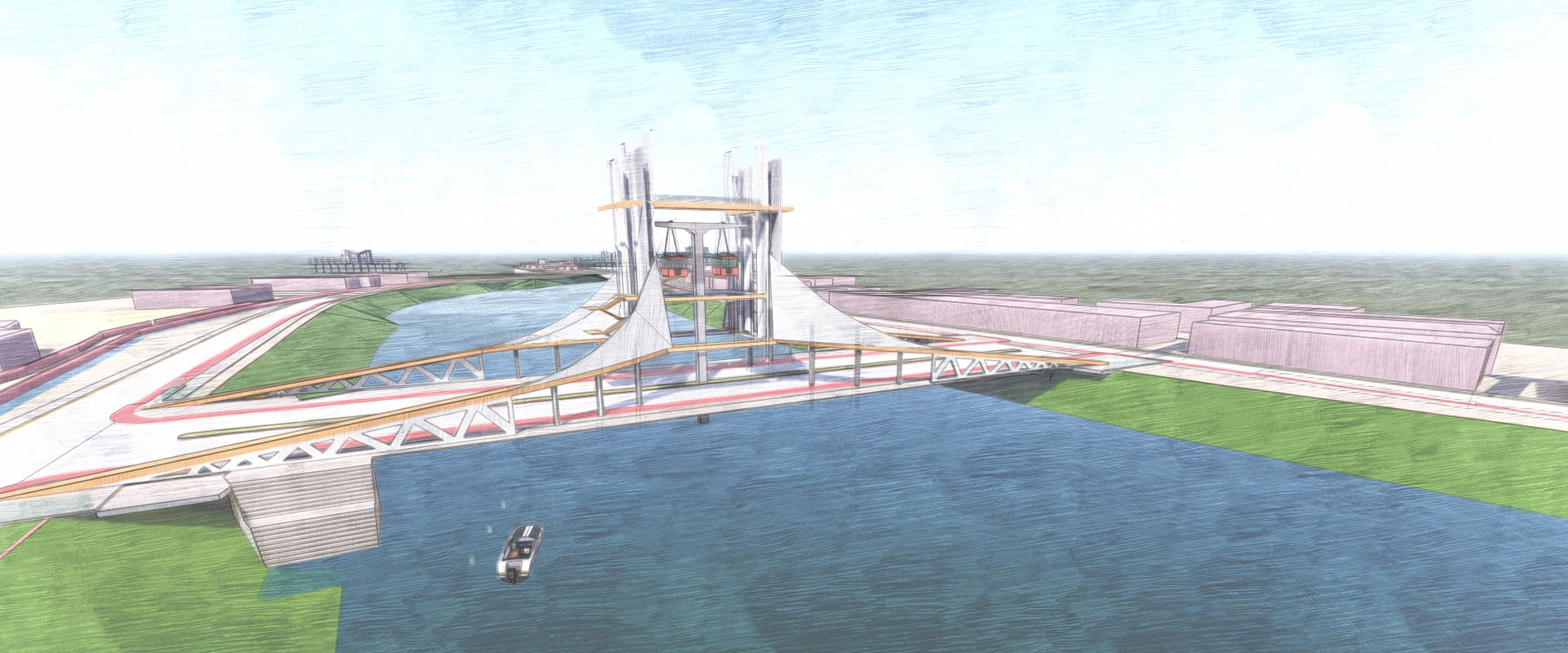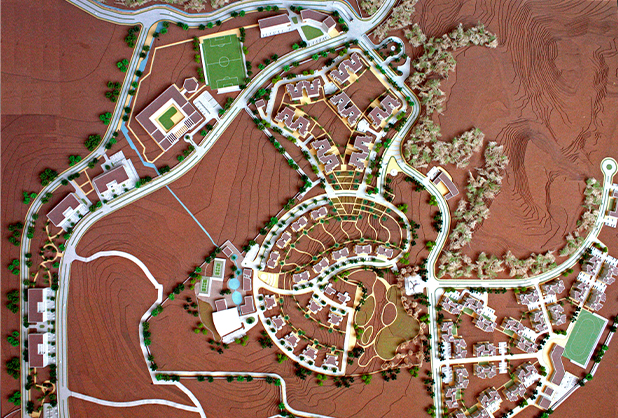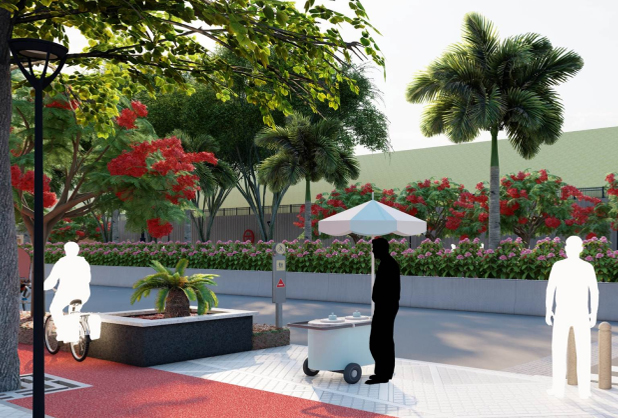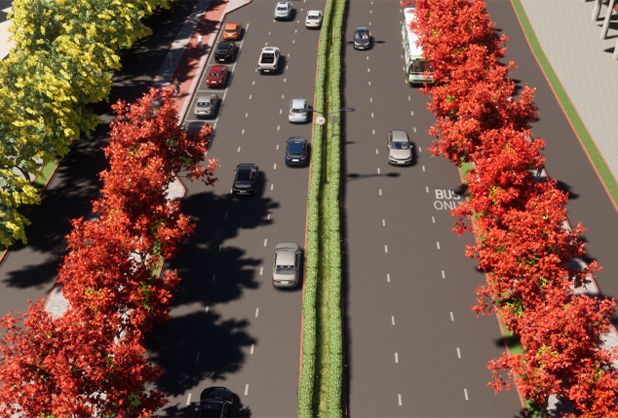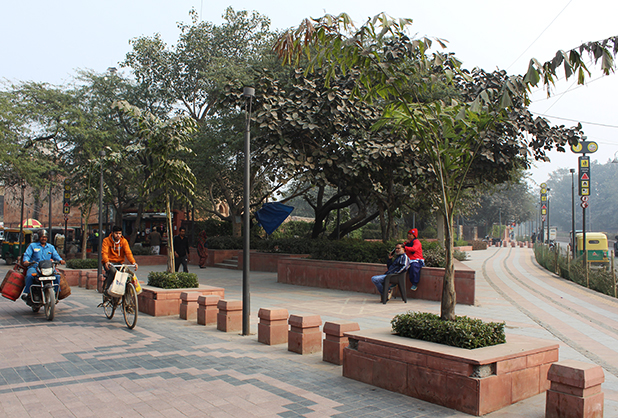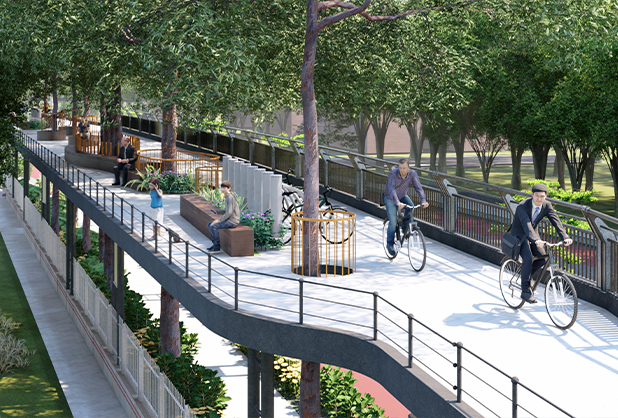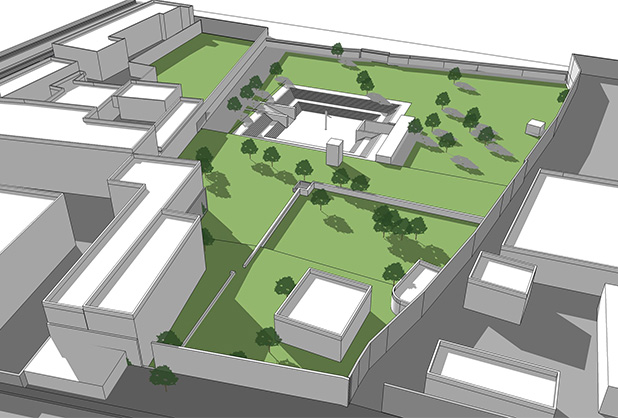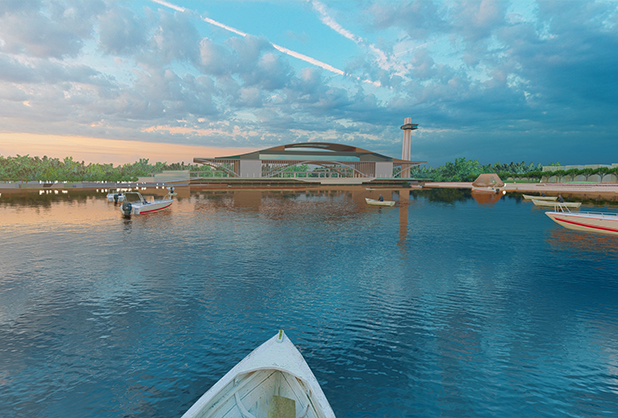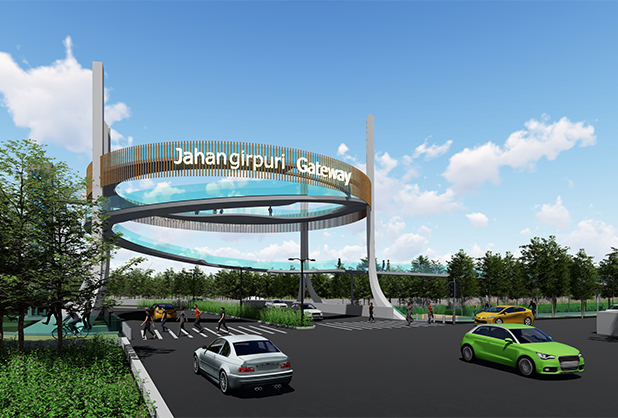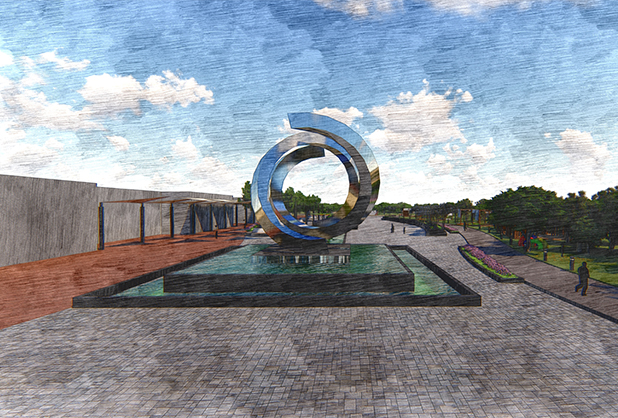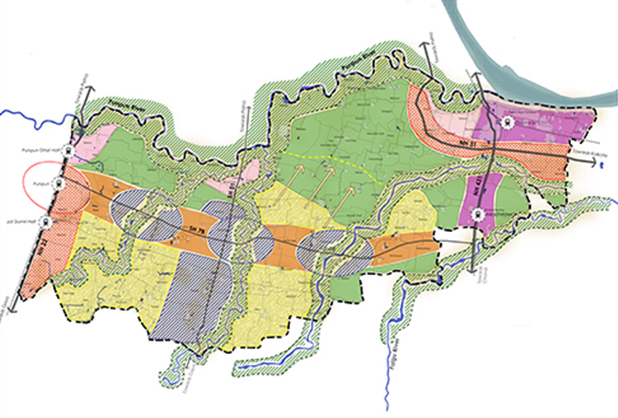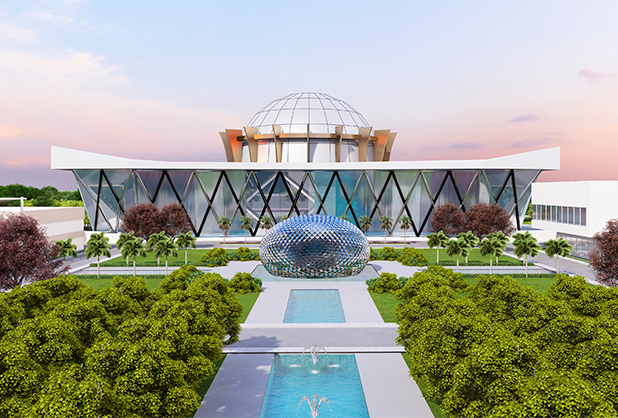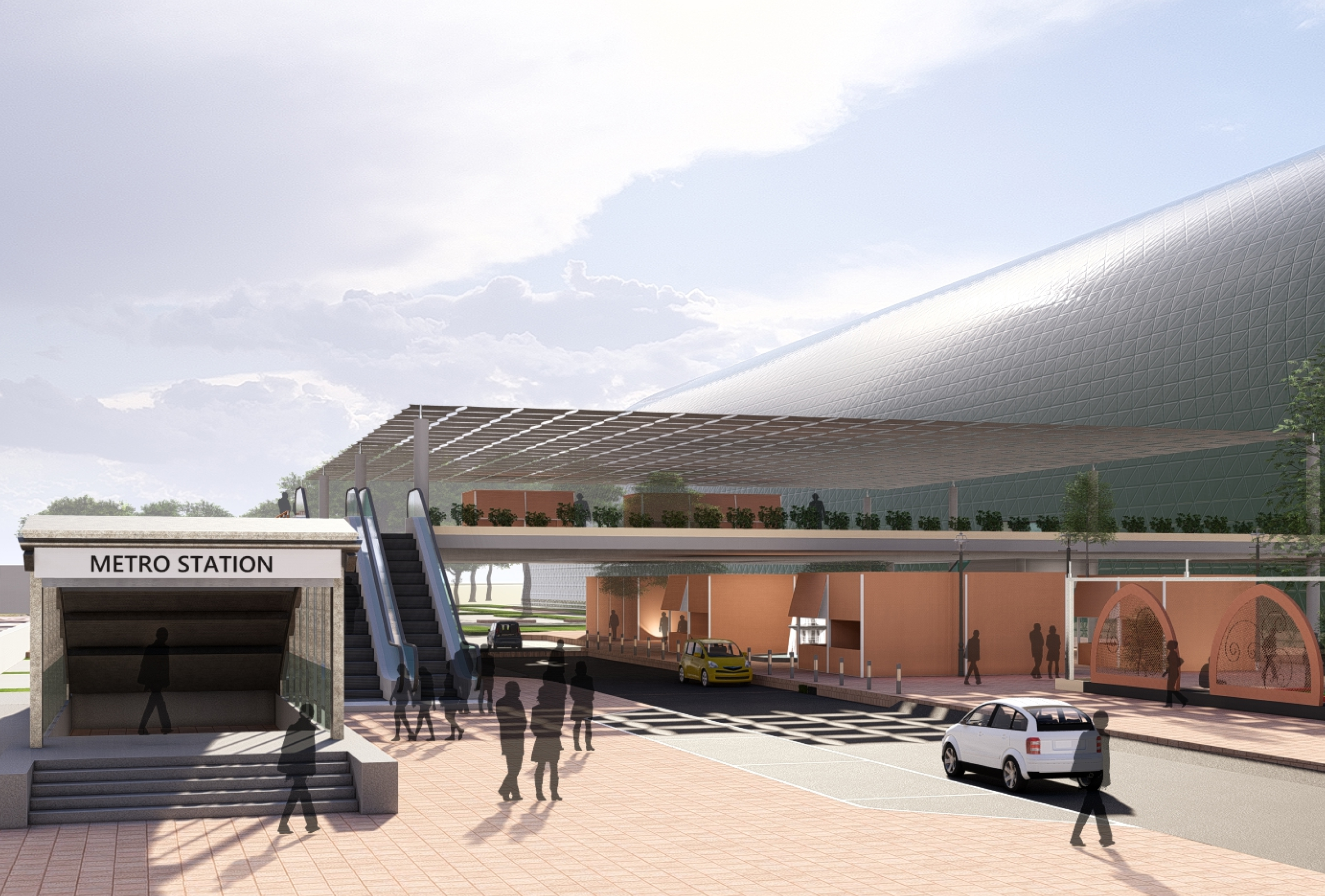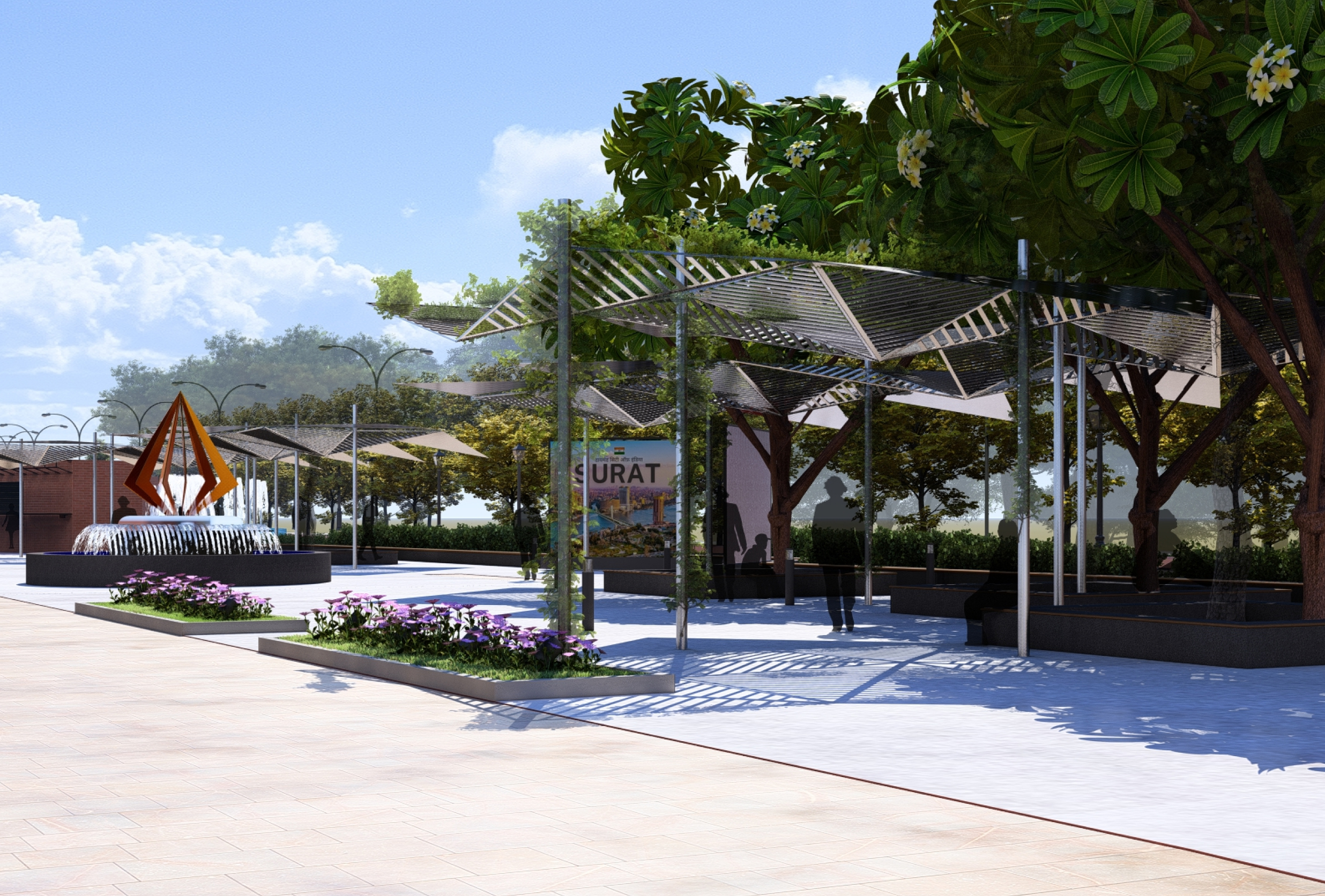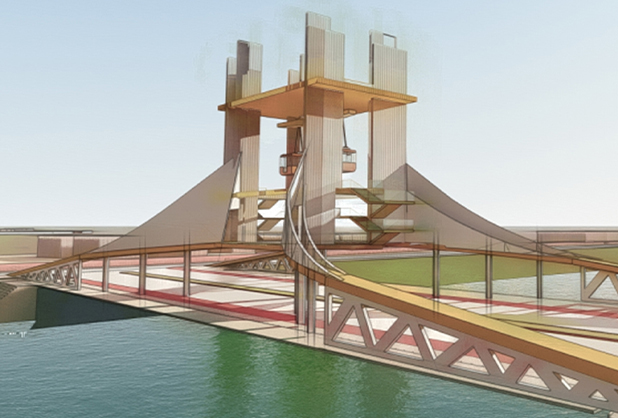
Bridges
Najafgarh Waterfront Development
Najafgarh drain redevelopment envisions ecological restoration and rejuvenation of the 27km stretch of the drain along with place making of the waterfront and enhancing the cross connectivity through regular bridge connections and seamless road connectivity along the waterfront. The entire waterfront shall be reclaimed as a new public realm for the city wherein the existing bridges (15 in no.) and proposed bridges (13 in no) shall feature pedestrian, cyclist and vehicular movement along with development of an alternate public transport system- the ropeway network. The proposed bridges not only act as a ‘seam’ but are designed as public buildings for the citizens featuring boating activities, community and recreational facilities, sky decks for visually connecting to the waterfront and ropeway stations that shall form the experiential transportation system for the city overlooking the waterfront.
The vision and design principles driving the bridge design are:
- Touching the ground sensitively respecting the ecological context.
- Design the bridge as an object in space.
- Creating gateways for recreational activities and places for community interaction.
- Designing the bridges as part of the natural landscape itself.
- Solar power generation.
The design of bridges has been evolved as per the context driven demand and nature of activities along the waterfront. Various bridge typologies have been developed looking at the nature of the drain and the context around the proposed site of the bridge. Four typologies were identified and designed to enhance the overall master plan. These types change form and scale as per the nature and width of water channels and their corresponding use. The two major bridge types differ with respect to the presence or absence of community spaces. These types are further identified and designed as per the drain context (single or double drain). However the mobility infrastructure (road network), ropeway station and boating facilities remain common to both bridge types.
Bridges without community spaces are minimalistic and symbolic designed as sculptures across the drain. On the other hand, bridges with community spaces are designed as community hotspots with recreational and community facilities to bring the waterfront back into the urban life. Every bridge typology has a unique architectural character and design that celebrates the surroundings and creates experiential spaces. Skywalks, open terraces, colonnades around the community areas are designed to accentuate the visual access towards the blues. In addition to these, recreational spaces like indoor sports court, badminton and tennis courts are provided on the community floor. The community floor also features restaurants, banquet halls and cafeterias to bring about community interactions. Many bridges feature sky decks and observatories for viewing stars in the evenings. The sky decks and boating decks shall be landscaped to create a seamless view from inside to the outside. Different structural models – tubular forms and space frames have been articulated in a number of ways to create symbolic buildings appearing as sculptures and art forms over the Najafgarh drain.
-
SIZE:
-
STATUS:
DESIGN DEVELOPMENT
-
DESIGN PRINCIPAL:
VIKAS KANOJIA
-
DESIGN TEAM:
SYED IFRAH ASFAR, JATIN GROVER, JAIMIN BALI, CHETNA GARG, HARDIK AGGARWAL
-
COLLABORATORS:
ARCOP
